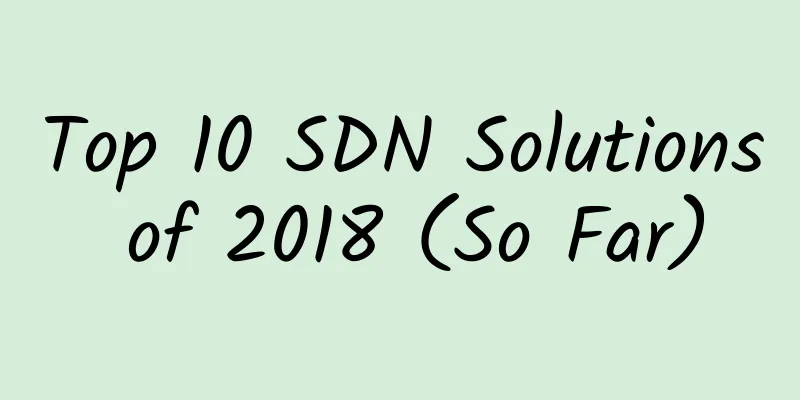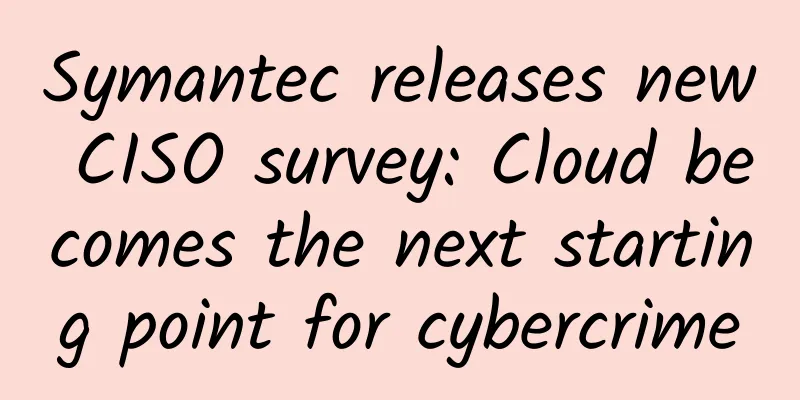Let’s talk about SRv6, the “super internet celebrity” in the communications industry

|
In this last technical article of 2020, I will talk about SRv6. In the past two years, SRv6 has become a "super internet celebrity" in the communications industry. Whether it is a technical summit or an industry forum, it is indispensable. Many bigwigs even claim that "SRv6 is the soul of the future network." What exactly is SRv6? Is it really that awesome? Don't be impatient, let me start from the beginning - As we all know, the Internet that we love today was born and developed in the 1980s. What is the basis of the Internet? Of course it is IP, the Internet Protocol. If your computer or mobile phone does not have the IP protocol installed and an IP address assigned to it, you will not be able to access the Internet, let alone flirt with girls, watch TV series, or play games. In fact, to put it bluntly, the Internet is a "delivery system" . The IP address is your communication address, and the IP protocol is the "work flow and system" of the courier company. All texts, audios, and videos are packaged into "express parcels" , then transported by the express system and finally delivered to the destination. The earliest IP protocol was not mature. After several versions, version 4 finally became more reliable and began to be widely deployed. This version 4 is the IPv4 we have been using. IPv4 addresses and IPv4 protocols are usually simply referred to as IP addresses and IP protocols. So, although the version of the IP protocol is v4, in fact, we should call it the "IP 1.0 era" . "IP 1.0" laid the foundation for the early Internet. However, as the Internet expanded rapidly, it soon exposed its own problems. In the "IP 1.0" network, each router makes independent routing decisions for data packets. That is to say, when the express is delivered to each station, the station needs to open the express box, check the contents, and then decide where to send it . As a result, the efficiency of the entire system will be very low. Open the package, read the contents, and make a decision Even if the delivery direction is decided, the courier will take a " trying " attitude and try to deliver it. If there are too many packages on this route and he can't take them, he will just throw them away.
If you can't take it, throw it away Such a mechanism has no flexibility and reliability, and its delivery capacity is also very poor. By the 20th century, experts were increasingly dissatisfied with "IP 1.0", so MPLS (Multi-Protocol Label Switching) was proposed. The key to MPLS lies in the label . As mentioned earlier, in the traditional routing network, every courier station that handles the package needs to open the box, check the contents, and then decide where to send it. In the MPLS network, data is encapsulated in boxes with labels attached. Each courier station that handles the data only needs to read the label to know where the box should be delivered. After the emergence of MPLS, it quickly became popular throughout the IP network and became a mainstream technology. Especially for government and enterprise users, the stable and reliable services provided by MPLS helped operators make a lot of money. The era represented by MPLS can be called the " IP 2.0 " era, which has continued to this day. Well, it’s finally the turn of IPv6 and SRv6 to shine. SRv6, to put it simply, is actually SR+IPv6. Let's talk about IPv6 first.
Everyone should be very familiar with IPv6, and there are many articles introducing it online. However, most of the articles only emphasize that IPv6 has longer addresses and more addresses . IPv6 address example: 2001:0db8:85a3:08d3:1319:8a2e:0370:7344 In fact, if we only look at it from the perspective of ordinary users, adopt the "public network + private network" method and use it sparingly, our network can last for another few years, or even more than ten years. The so-called private network, to put it bluntly, is just a "gatekeeper" technology . There are many residents living in one building. Because there are not enough mailboxes, every time a courier arrives, it has to be left with the security guard. The security guard knows every resident and will make a second delivery. This is how private network addresses are used, technically called NAT (Network Address Translation). Most of our Internet devices do not need public network addresses because we are visitors who need to find data. The ones who really need public network addresses are the devices that generate and store data, the ones being visited . The IoT devices that are emerging nowadays are the ones being visited, such as webcams, shared bicycles, smart water meters, smart electricity meters, etc. They generate data and are controlled by the cloud. IoT devices use public IP addresses, which can more easily achieve end-to-end "direct access " and facilitate data uploading and command sending. Let’s take the example of the doorman just now. If you are really looking forward to this express delivery, you would hope that the courier will deliver it directly to you instead of sending it to the doorman or Fengchao express locker, right? "Gatekeeper technology" has certain benefits (such as security and saving address resources), but it means greater latency, higher requirements for the gatekeeper, and unnecessary energy consumption and costs. IPv6 directly eliminates the gatekeepers, allowing everyone to achieve "freedom to send and receive express delivery", greatly simplifying the network architecture. Although IPv6 has greatly increased the number of IP addresses, this is not the reason or motivation for operators to spend huge amounts of money on upgrading the entire network. In other words, the address quantity advantage of IPv6 only accounts for 30% of its total advantages. Its biggest improvement is the expansion and upgrade of data packet message formats. In other words, the biggest advantage of IPv6 is not the increase in the number of mailboxes, but the change in express packaging boxes. The data packet format of IPv6 is more "luxurious" than that of IPv4. Before we continue to introduce IPv6, let's talk about SR . SR stands for Segment Routing, and it was implemented earlier than IPv6. As we all know, the entire IP network, as shown in the figure below, is divided into segments. For an SR network, a network segment connecting any two SR nodes is called a Segment. A Segment is identified by a Segment ID (SID). Note that these are not necessarily adjacent nodes. The core principle of SR is Zhuge Liang’s “magic trick”. When a data packet enters the network, the network will tell the data packet all the information about the links and nodes it will pass through. Put N pieces of paper in order. Tear off one piece each time you pass a place. When you have torn all the pieces off, you have reached the finish line. Traditional MPLS sends all path information to each node, and then asks for directions after the data packet arrives. SR technology can be directly applied to MPLS architecture. After the emergence of IPv6, SR began to have close contact with IPv6. Thus, SRv6 was born. The basic principle of SRv6 is the same as SR, and it is also a "magic trick" technology. The unique message structure of IPv6 can be perfectly matched with SR. SRv6 can also be combined with the popular SDN technology. SDN stands for software-defined networking. To put it simply, the entire network is controlled and managed in a unified manner. SDN Network The advantages of SRv6 are all based on technology. Due to space limitations, I will explain it in detail another day. In short, remember that it is simple, efficient, and programmable. What is programmability? Simply put, data networks are like computer hardware, SDN is the program, and SRv6 is the instruction. With the help of SRv6, SDN can drive data networks and operate on demand. Image from CISCO IPv6 is a luxurious express box that can be labeled with many labels, so that couriers and delivery stations can easily know what type of items are inside. In this way, it is very easy to achieve "differential treatment" of packages. For example, if it says "Handle with care", it means it is a valuable business. If it says "Urgent", it means it is an urgent business. For the network, latency, bandwidth, priority, etc. are all labels and can be identified by labels. This is full of "humanization" and more flexible for the business. Although SRv6 looks very good, it has a fatal flaw: it wastes resources . In the traditional sense of data communication networks, it is too expensive . Think about it, the data packet format has become so large, and the message header has become so complicated. Then, the actual user data, as a percentage of the weight of the entire package, has become smaller, right? SRv6 packet encapsulation format The courier is exhausted carrying a 10kg package, of which only 5kg is the goods. Don't you think this is nonsense? As the owners of data networks, telecom operators are very sensitive to network efficiency. They spend money to expand network capacity in order to send more real goods, not express boxes. Moreover, the message length is too long, which places higher requirements on the hardware processing chip, increasing the cost and difficulty. Therefore, everyone focused on the " header compression " for native SRv6. Several companies proposed their own "header compression" solutions, hoping to compress the packet header as small as possible and increase the proportion of real goods. This is a bit like the compression formats of video, audio and pictures, which are competing with each other's algorithms. For example, G-SRv6, which is promoted by China Mobile, is one of the compression solutions. Finally, I will talk about the commercialization progress of IPv6 and SRv6 . We can call the new IP network represented by IPv6 and SRv6 " IP 3.0 ". Our country is the most active country in the world in promoting IPv6. The reason is not only because we have a large population, but also because we attach great importance to 5G and the Internet of Everything. The industrial Internet, Internet of Vehicles, smart cities, smart education, smart medical care, smart mines, etc. that we promote all require IPv6. Traditional IPv4, which relies on ICANN's address allocation, is always controlled by others. Therefore, the implementation of IPv6 is actually to "get rid of control." Moreover, our country is a major network country, and the scale of our backbone network ranks among the top in the world. The more advanced the network technology, the more it can improve our network efficiency and reduce the energy consumption of network operation. Because we are anxious, we are also very radical in the standards. Our country is in sync with international standards in the formulation of IPv6 standards, and even ahead of them. It is not an exaggeration to say that China is leading the world. As for operators, China Mobile is currently at the forefront in setting standards, while China Telecom is moving faster in terms of implementation. Not to mention the equipment suppliers, as new technology means that a large number of equipment need to be replaced, and their performance has a new direction, which is simply wonderful. Well, the above is the general situation of IPv6 and SRv6. If you understand this article, you will know the basic logical relationship behind these concepts. If you understand the logical relationship, it will be much easier for you to learn the specific technical details. Even if you don’t learn the technology in depth, at least it’s enough to brag to your friends. Right? |
>>: 7 things you need to know to successfully deploy AIOps
Recommend
An article reveals the practice and thinking of edge computing reference architecture 2.0
[51CTO.com original article] With the development...
Header comparison between IPV4 and IPV6
An IP packet consists of two parts: header and pa...
Gartner: The number of devices in use worldwide will reach 6.2 billion in 2021
[[391127]] Recently, Gartner pointed out that the...
Global 5G commercial networks have reached 169 continents and are now covered
[[407907]] According to the latest report from GS...
Why Microsoft won't rebuild Windows based on the Linux kernel
A few weeks ago, the opinion of Eric S Raymond, a...
Huawei and TestBird sign a memorandum of cooperation to promote the development of cloud testing ecosystem
[September 11, 2017] On September 7, during HUAWE...
Ruijie attended the CERNET Annual Conference and used its color light technology to depict a new blueprint for digital campuses
Recently, the 28th/29th Annual Academic Conferenc...
Ten reasons why traditional routers are abandoned (six, seven, eight)
Over the years, we've dutifully upgraded our ...
Are you still worried about TCP retransmission, sliding window, flow control, and congestion control? You won’t have to worry after reading the diagrams.
Preface The previous article "Whether it is ...
Megalayer Summer Promotion: US servers start from 99 yuan/month, Hong Kong high-defense servers start from 299 yuan/month
Megalayer launched a summer ice point special off...
AlphaVPS: Large hard disk VPS starts at 15 euros per year (or €2/month), AMD EYPC+NVMe series starts at €3.99/month
AlphaVPS is a Bulgarian local host (DA Internatio...
Wu Hequan: 5G, as the first choice for new infrastructure, will face five major challenges
On April 28, Wu Hequan, an academician of the Chi...
Sign up for the 2019 Huawei Cloud Kunpeng Developer Competition now. Developers can collect prize money while playing games!
[51CTO.com original article] In the movie "L...
Here is a list of RackNerd's cheap promotional packages, starting from $9.89 per year
RackNerd has a certain position among low-cost VP...









